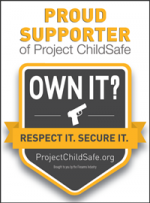The CDC study on which both of these articles are based was just published in the July issue of Pediatrics. CNN and Trace use the study to craft sensational headlines in the hope of moving public opinion to support gun control. Both cherry pick incidents to add credibility to their headlines. For instance, the CNN report begins with the case of a third-grader accidentally shot in the stomach at school by another student and another describes a baby accidentally shot by his father. You are left with the impression that these are typical situations that occur often. In fact, the CNN article says:
About 21% of those injuries are unintentional, similar to the third-grader's case.The Trace breaks down the different types of death and writes regarding unintentional gun deaths, that both younger and older children commonly died while playing with a gun, without telling the reader that such occurrences are rare.
Jacob Sullum points out in his Reason.com article that 78 percent of the deaths were 13-to-17-year-olds. Of those, 53 percent were homicides, and 38 percent were suicides. Less than 4 percent were accidents involving children 12 or younger, so the examples cited by CNN are anything but typical.
Sullum reminds us that circumstances matter:
The circumstances matter, of course, because solutions that might make sense for one sort of gun death may be irrelevant to another. Safe gun storage and handling, for example, can keep third-graders from taking guns to school in their backpacks and prevent infants from being injured by careless rifle cleaning. But they cannot reasonably be expected to have much of an impact on gang violence. The authors of the Pediatrics study found that 40 percent of the homicides involving teenagers grew out of "arguments" (presumably including black-market disputes, a phenomenon created by drug prohibition), 31 percent were "precipitated by another crime," 21 percent were gang-related, 9 percent were drive-by shootings, and 7 percent killed bystanders. Some of those categories overlap.It's all about driving an agenda. Dr. Robert Young of Doctors for Responsible Gun Ownership told Cam Edwards of NRATV's Cam and Company on Monday that is exactly what this study is - an agenda-driven study. He told Edwards that when you look at the data on a state-by-state basis, you find there are outliers in both directions. Dr. Young said there is no causal relationship demonstrated in the data. He also said the age range is capped at 17 instead of 20 in order to help get the desired result. Dr. Young said that safe gun storage is important and something that all gun owners should take seriously. But, passing unenforceable storage or "smart gun" laws will do nothing to increase safety.
The homicide rate among minors (17 or younger) rose by 17 percent from 2002 to 2007, then fell by 36 percent from 2007 to 2014. The suicide rate, by contrast, fell by 23 percent from 2002 to 2007, then rose by 60 percent from 2007 to 2014. Deaths from gun accidents, the scenario emphasized by CNN, fell steadily during the study period. In fact, the researchers note, "unintentional firearm death rates have been steadily declining for several decades."








No comments:
Post a Comment